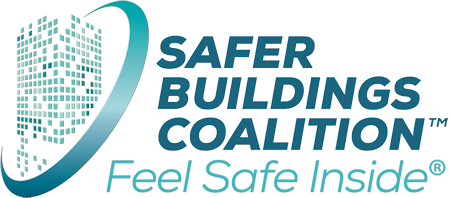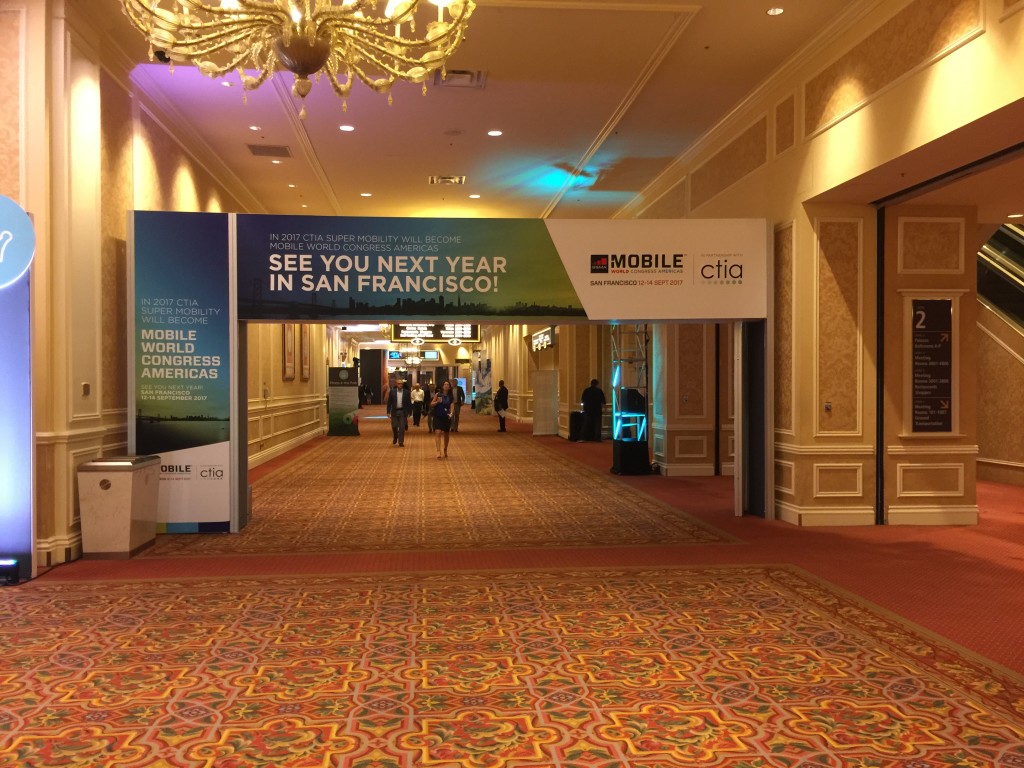CTIA Recap | Closing Time on CTIA Super Mobility 2016Posted on September 14, 2016. | By Mike Collado, SBC Board Member
Last week, as I exited the Sands Expo which hosted CTIA’s Super Mobility and passed under the big banner that proclaimed, “See You Next Year in San Francisco”, I couldn’t help but think of the lyric from Semisonic’s smash hit from 1998, Closing Time… “Every new beginning comes from some other beginning’s end.” That’s because next year, CTIA will partner with GSMA (which produces Mobile World Congress) to create a new mobile industry event to be known as GSMA Mobile World Congress Americas. Although radically different from the first CTIA conference I attended as a newly-hired marketing manager at a recently-rebranded MobileAccess in 2004, the 2016 edition served an important purpose. As I observed in a CTIA preview, no other North American conference draws such a broad swath of wireless industry ecosystem from the macro to the edge, as well as stakeholders within each organization from the executives to field personnel. Here is what stood out to me… 5G: Evolutionary or Revolutionary?During the well-attended Tower & Small Cell Summit Roundtable Breakfast session, Ric Prentiss (Managing Director at Raymond James & Associates) called 5G an evolutionary – not revolutionary – technology. Prentiss’ assessment contrasts Günther H. Oettinger (Commissioner for Digital Economy & Society at the European Commission) who, during a presentation at this year’s Mobile World Congress, described 5G as the most important transformation since the Industrial Revolution. Who’s right? To me, evolution is about improving existing solutions by making them faster, smaller or cheaper. Revolution is when a radically new platform or approach is introduced. It’s the original Mini Cooper (evolutionary) versus Tesla (revolutionary). With the dichotomic ability to deliver both fiber-like wireless speeds as well as very low bandwidth, 5G may be evolutionary but have revolutionary ramifications. The 10x bandwidth increase is expected to create an inflection point for the in-building wireless cellular enhancement ecosystem because it will be more difficult for the RF signal to propagate into buildings. 5G is also likely to “break” most conventional in-building wireless networks whose copper coaxial cable infrastructure will not be able to support gigabit speeds; therefore new and revolutionary architectures will need to be innovated. And, of course, the low bandwidth is pivotal to enable IoT which industry luminaries suggest will revolutionize every aspect of our lives. Neutral Host Business Model: Clear Winner but Enterprise Go-To-Market UnclearThe resounding message among the ecosystem and industry luminaries is that the neutral host model – a/k/a, multi-carrier or multi-tenant – is the most attractive approach for both towers and in-building networks due to the inherent ability to drive incremental revenue. Raymond James’ Ric Prentiss describes neutral host as the “trunk of a tree” where the benefit is to consolidate and append services or “branches” to reduce deployment costs. The same theme was echoed in a series of panel discussions during the Tower and Small Cell Summit featuring OEMs, Neutral Hosts and other stakeholders. But while this business model has worked successfully for large venues, panelists acknowledged that deployments in these venues has slowed due to market saturation and that adapting the model for smaller, enterprise venues – which includes engaging the venue owner to pay a share – has been challenging. In spite of repeated prompting from Haig Sarkissian (founder and principal at Wireless 20/20) who, as moderator of some of these discussions, sought answers to motivate the venue owner to pay, scant clear ideas were introduced. This informs that perhaps that venue owner “pain” has not yet reached an acute level to open his/her wallet; business model ROI expectations are misaligned with the venue owner; the wireless industry has not effectively engaged and educated the venue owner industry; or some combination of these factors. In-Building Wireless Ecosystem: Product Innovation & Market ExpansionVendors continue to innovate to meet market demand for increased performance and lowered TCO (total cost of ownership). One way is to make the difficult things easier, including designing, building, joining, commissioning, optimizing, monitoring and managing the network. Other approaches reduce physical space requirements, eliminate reliance upon conventional electrical power options, enable more bands, and leverage existing infrastructure or assets – like street furniture – to extend wireless coverage to the edge. As the ecosystem seeks creative strategies to enable cellular inside the “middleprise” (buildings having 100k to 500 sq. ft.), some stakeholders at CTIA predict that market growth would come from WiFi and Unlicensed Spectrum, not DAS and Small Cells. Solutions might look like WiFi calling or, perhaps, MulteFire small cells delivering LTE over unlicensed spectrum. Lastly, indoor public-safety communications continues to emerge as a market that requires innovative solutions to comply with more stringent public-safety and building codes. In-building wireless participants are expanding their product roadmaps and go-to-market strategies to address this market. Portfolios include DAS, Repeaters that are becoming increasingly sophisticated and blurring the lines with DAS, and even Small Cells capable of supporting multiple bands. Mike Collado is a marketing executive and brand evangelist who helps companies win mindshare and capture marketshare. He recently served as Vice President of Marketing for SOLiD where he led the strategy and execution for all corporate marketing, product marketing and marketing communications. Mike serves as an advisor for both industry and non-profit organizations including his role as a board member of the Safer Buildings Coalition. Email comments to [email protected]. Learn more about joining the SBC by clicking here. Also be sure follow us on our Facebook page, Twitter (@SaferBuildings), and connect with us on LinkedIn. |


